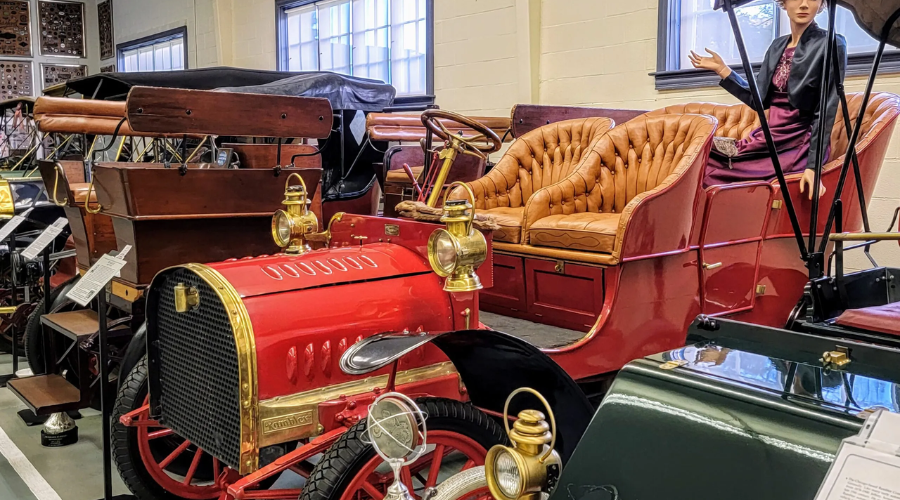A Glimpse into the Past
Automotive museums are like portals to the past, offering visitors a unique opportunity to step back in time and witness the evolution of automobiles. They house a diverse range of vehicles, from the earliest horseless carriages to iconic classics and cutting-edge modern cars. These museums serve as living history books, allowing us to see, touch, and experience the vehicles that have shaped our world.
But it’s not just about the cars themselves. Automotive museums provide context, explaining the technological advancements, design trends, and cultural influences that led to the development of each vehicle. By doing so, they help us appreciate how far we’ve come and the ingenuity that has driven automotive progress.
Preserving Technological Milestones
Throughout history, the automotive industry has been a hotbed of innovation. The development of the automobile sparked breakthroughs in manufacturing, engineering, and design. Automotive museums play a crucial role in preserving these technological milestones.
Visitors can explore engines, transmissions, and other components, gaining insight into the intricate workings of these machines. Additionally, many museums have interactive displays and educational programs that explain the science behind automotive innovations. This not only fascinates car enthusiasts but also inspires future engineers and inventors.
Cultural Significance
The impact of the automobile extends far beyond its technical achievements. It has left an indelible mark on our culture, influencing everything from architecture to music. Automotive museums recognize this cultural significance and often feature exhibits that showcase how cars have shaped society.
For example, they might display iconic cars from movies and television shows, highlighting the role of automobiles in pop culture. They might also explore the impact of cars on travel and tourism, illustrating how the freedom of the open road has been romanticized in literature and film. By connecting the dots between cars and culture, these museums ensure that the broader influence of the automobile is not forgotten.
Preserving Stories and Memories
Every car has a story to tell, and automotive museums are the custodians of these stories. Many of the vehicles on display have rich histories, whether they were owned by famous individuals, played a pivotal role in a historic event, or were symbols of innovation in their time.
These museums often feature plaques or information panels that provide insights into the provenance and significance of each vehicle. Some even offer audio or multimedia guides that share anecdotes and personal accounts related to the cars. By preserving these stories and memories, automotive museums humanize the machines and connect us with the people and events that shaped automotive history.
Inspiring Future Generations
One of the most vital roles of automotive museums is to inspire future generations. They are not just places for nostalgia; they are educational institutions that ignite curiosity and passion for automobiles. Young visitors can see the progression of technology and design over the decades, sparking an interest in STEM fields. Moreover, these museums often collaborate with schools to offer educational programs that delve into automotive history, engineering principles, and environmental impacts.
Additionally, automotive museums can foster a sense of wonder and creativity. The sheer diversity of designs and concepts on display can encourage budding artists and designers to explore new ideas and concepts. Who knows, the next groundbreaking car design may be inspired by a visit to one of these museums.
Preserving the Future
Preserving history isn’t just about the past; it’s about safeguarding it for future generations. Automotive museums are well aware of this responsibility. They invest in the conservation and restoration of their collections, ensuring that these valuable artifacts remain in pristine condition for years to come.
Moreover, museums often collaborate with researchers and experts to advance our understanding of automotive history. They may participate in documentation projects, conduct in-depth studies on specific vehicles, and share their findings with the broader community. This commitment to research and preservation ensures that our automotive heritage is not lost to time.
Conclusion
Automotive museums are more than just a collection of cars; they are time capsules that transport us to different eras, allowing us to appreciate the rich tapestry of history woven by the automotive industry. They are custodians of technological achievements, cultural influences, and human stories, all of which have been shaped by the automobile. These museums not only preserve the past but also inspire future generations to continue the journey of innovation and exploration. So, the next time you step into an automotive museum, remember that you’re not just admiring cars; you’re embarking on a journey through time.




